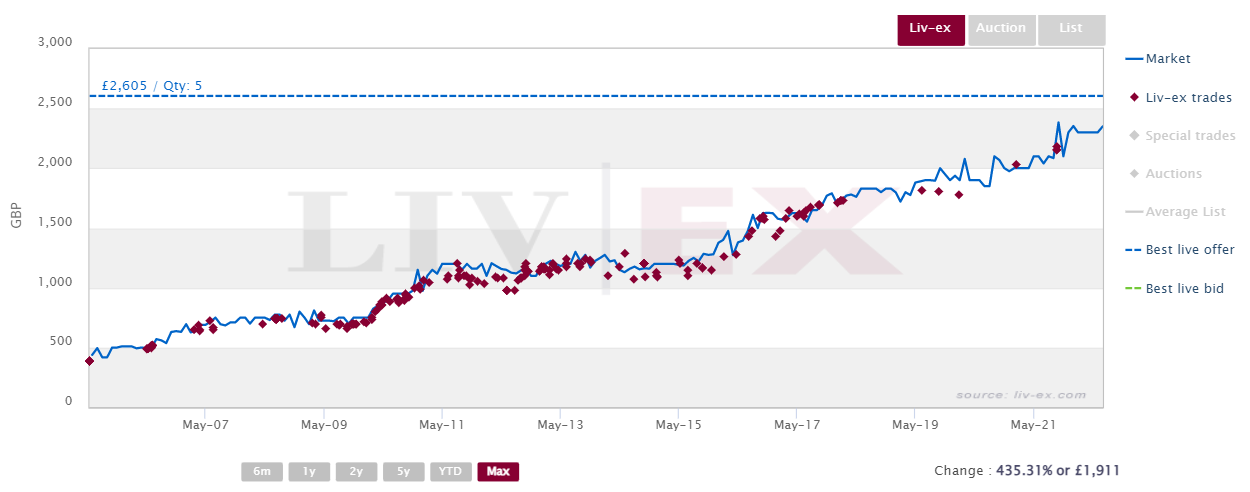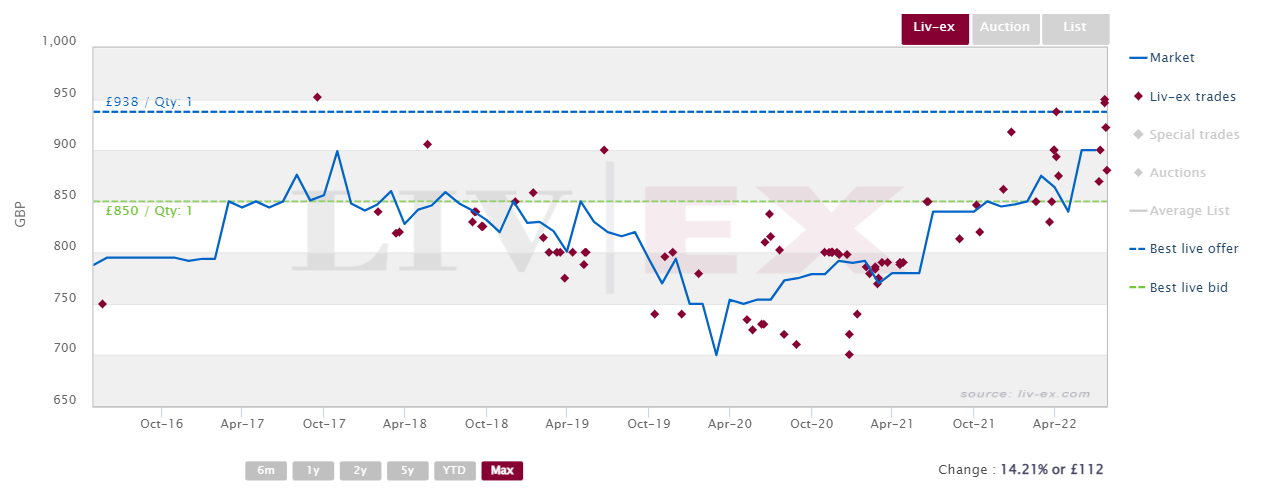- The Mid-Autumn a.k.a. Moon Festival is China’s second most important festival after New Year.
- Biodynamic winemaking, based on the ideologies of Austrian philosopher Rudolf Steiner, often follows the phases of the moon to determine important viticultural tasks.
- DRC, Domaine Leroy, Château Palmer, Château Pontet-Canet and Seña are five biodynamic estates that enjoy high levels of secondary market trade in Asia.
Biodynamic wines, which are often made following the lunar cycle, are a natural choice for the Chinese Moon Festival, which falls on the 10th of September this year. Below we examine the performance of five biodynamic wine estates that enjoy widespread secondary market demand in Asia.
Domaine de la Romanée-Conti
When it comes to secondary market trade, Domaine de la Romanée-Conti is the top-traded producer in Asia. In 2022, the most in-demand wines have been its Grands Echezeaux Grand Cru 2005 (£58,370 per 12×75) and Romanée-Conti Grand Cru 2018 (£240,023 per 12×75).
After seven years experimenting with biodynamics on seven hectares of vineyards, the entire domaine was converted in 2007.
Domaine Leroy
Domaine Leroy, which is the most powerful wine label in the secondary market according to the 2021 Liv-ex Power 100 rankings, is among the 15 most-traded growers in Asia. Its Vosne-Romanée Les Beaux Monts 2013 (£53,181 per 12×75) and Bourgogne Rouge 2004 (£37,200 per 12×75) have been the most active labels in Asia so far this year.
Biodynamics have been practiced at Domaine Leroy since its establishment in 1988.
Château Palmer
Two pre-biodynamic vintages, the 1999 (£2,947 per 12×75) and 2004 (£2,350 per 12×75), lead Asian demand for Palmer so far in 2022. The estate’s transition toward biodynamic farming began with trials after the 2008 vintage. The estate shifted to 100% biodynamic farming in 2014 and achieved full certification in 2017.
In terms of price performance, the 2009 (up 21.6%) and 2006 (up 21.0%) have led the way year-to-date.
Palmer 2004 trades on Liv-ex

Château Pontet-Canet
At Pontet-Canet, the decision to go biodynamic was made in 2004, following tests on 14 hectares of vineyard. The wines were certified organic by Ecocert and biodynamic by Biodyvin in 2010.
The move to biodynamics also coincided with the use of amphorae to mature some of the wines at the estate.
The 2015 vintage of the grand vin leads trade in Asia so far in 2022. The wine has risen 6.9% in value since release. Year-to-date, the best performing vintages have been 2013 (12.3%) and 2012 (10.1%).
Pontet-Canet 2015 trades on Liv-ex
Seña
A sustainable and biodynamic ethos has been practiced at Chilean brand Seña since it was founded in 1995.
A joint project between the Chadwick and Mondavi families, the wine was ranked in the third tier of the 2021 Liv-ex Classification. Seña has also been the third most traded wine label in Asia from the ‘Rest of the World’ category so far in 2022. Its 2019, 2012 and 2017 vintages have met with the highest demand among Asian buyers.
Its 2020 vintage is due to be released via La Place de Bordeaux this week (1st September).
Liv-ex analysis is drawn from the world’s most comprehensive database of fine wine prices. The data reflects the real time activity of Liv-ex’s 600 merchant members from across the globe. Together they represent the largest pool of liquidity in the world – currently £80m of bids and offers across 16,000 wines. Independent data, direct from the market.
Not a member of Liv-ex? Request a demo to see the exchange and a member of our team will be in touch with you shortly.






